Tomato Aphrodite is quite popular due to its special qualities and resistance to various factors. The fruits grow quickly, the bushes do not require any special care and give a pretty good harvest. And you can use tomatoes almost everywhere.
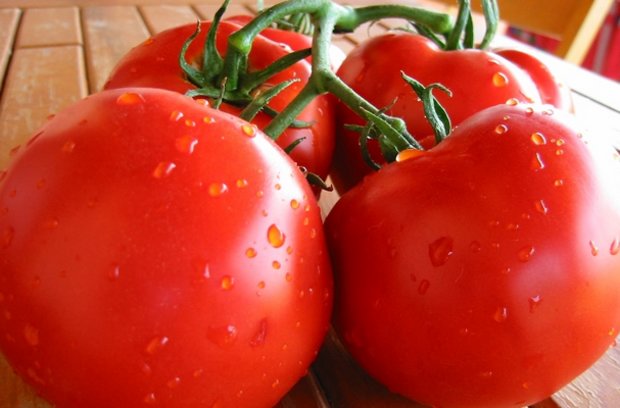
Content
Description and characteristic
This hybrid of tomatoes is ultra-early. The plant itself is tall and grows to 1.5 m. It has a lot of bright green foliage, the bush itself is not standard, but determinant. The ripened fruits are very tasty, sweet and juicy. The solids in them are about 5%. The tomato is bright red, has the correct shape, round and symmetrical, with 3-4 cameras. The skin is glossy and dense. These tomatoes have no stain on the stalk.
The tomatoes themselves are small, usually the weight of one fruit is about 90-115 g, but there are also 170 g each. They are uniform in their shape and size on the bush and on its brush. Tomatoes Aphrodite perfectly tolerate transportation and storage, since the skin does not crack, like some other varieties.
Small bushes up to 50 cm have medium-sized leaves. The bush has a simple inflorescence, on which about 6-8 pilafs. The first brush of the plant is laid on top of the 5th or 6th leaf. The rest, through the sheet or even without dividing it.
Plants ripen in about 70 days after you plant seedlings. Due to the climate and weather conditions in some areas, this period can stretch for 100 days.
Aphrodite gives a good harvest, both in the open ground and in the film greenhouse. Depending on the conditions, the yield in the greenhouse varies from 14 to 18 kg per square meter, and in open ground - 8-10 kg.
For tomatoes, these are very good indicators.
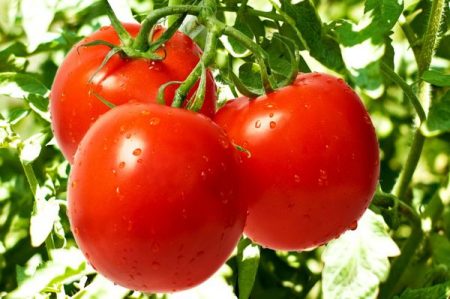
Although Aphrodite is finicky in soil and weather, it is grown in many regions:
- Crimea;
- Astrakhan;
- Caucasus;
- Belgorod and Voronezh regions.
Here they are planted in open ground. And in the middle lane should cover the beds with film in the spring. In the northern regions, they should be grown only in greenhouses, but this method gives very good results.
Advantages and disadvantages of Aphrodite
As in all plants, in tomatoes Aphrodite you can find its pros and cons.
Grade Advantages:
- bear fruit well;
- grow quickly;
- Outwardly, they look almost the same in shape, size, and other qualities;
- well, easily and simply stored;
- perfectly tolerate transportation;
- resistant to many diseases, unlike other varieties;
- almost not susceptible to pests;
- good taste characteristics for such an early variety;
- do not crack;
- they can not be stepson.
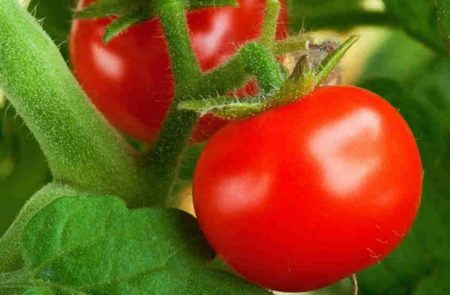
They also have disadvantages, but they are simply solved by agricultural methods:
- they are pretty whimsical to the weather;
- they must be formed;
- plants will have to be tied up.
How to grow tomatoes and care for them Aphrodite
Usually the seeds begin to germinate in early March or late February, give them germination, plant seedlings. When she grows up, she is dived and left to grow up. And already adult seedlings are planted in a greenhouse or in open ground. But it all depends on the timing of obtaining the fruit. Therefore, the month and day of planting and germination may vary. It is also important to consider the climate, temperature and weather. Not every year the weather is the same, in some plants they can freeze, and in another they will grow at full strength.
Seeds
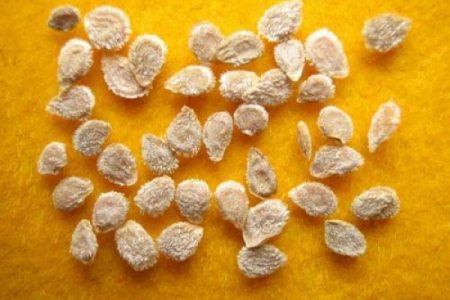
First, the seeds are checked for germination. To do this, they are wrapped in envelopes or rolls of paper or newspaper and tied with string. Then they are placed at one end in water for a couple of centimeters. After 7 days, it will be seen whether the seeds will germinate or not. In seeds with low germination, no more than 50% of seeds can be empty.
It is best to carry out a dragee after this. This is such a process during which the seeds are coated with various nutrients from mixtures that have adhesive properties. This is usually a polyacrylamide solution, whey, or fresh mullein solution. Polyacrylamide is diluted in the proportion of several grams per 10 liters of ordinary water. Mullein is bred 1 to 7-10. So the seeds get those necessary substances that may not be in the soil.
Right before planting, the seeds are heated at a temperature of 50-60 degrees. And they germinate at + 20- + 25 degrees. To do this, they are wrapped in light tissue, and even better in gauze, which can remain wet for a long time, put on a platter and left for 3-4 days.
Seed needs to be tempered at the beginning of germination. Place them in the refrigerator for 20 hours with a temperature of + 1- + 3 degrees. Then get them out and leave them in the room for 5 hours. Carry out such procedures for 6 days. Be sure to keep the seeds moist.
Soaking them before sowing will also be beneficial. You need to soak in melt water, ordinary water is frozen in the freezer, and then allowed to melt.
Seedlings
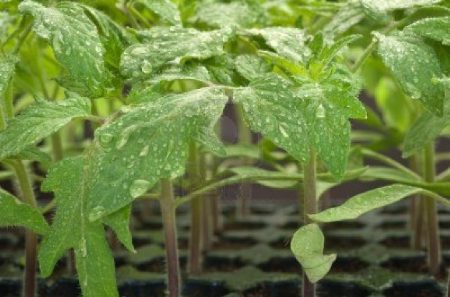
Plan your landing in advance. You will need to prepare the soil, as previously it was stored in the cold. Land needs to be prepared in the fall. When the ground melts, add to it the soil purchased at the store. Wood ash is also added to the mixture. Mix well until smooth. Then you can sow the seeds.
Seeds are planted to a depth of 1-2 cm. Create pits, spread the seeds in them and cover them with earth. You can first put the seeds on the soil, and only then press them a little and sprinkle with soil. This must be done carefully so as not to damage the sprout. Be sure to water after planting. Tomatoes will sprout within a week.
When the plants sprout well, you will need to dive them. After seedlings, they are systematically watered and, after growth, they are planted. For open ground, you should wait for warm weather, and for the greenhouse, mid-May is suitable.
The soil for planting seedlings also needs to be prepared. First dig it, fertilize, loosen and moisten. To get the desired results and a good harvest, you need to place 9 bushes per 1 square meter of land. No more. In this case, the distance between them should be about half a meter. Otherwise, the tomatoes will not develop as they should.
Care and watering
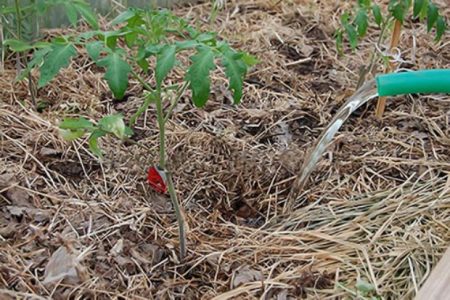
Tomatoes Aphrodite, like other varieties, love plentiful watering. They need to be looked after as well as other tomatoes: constantly weed, loosen the soil, it is enough to water and periodically process with various means from pests. This variety especially needs constant plant formation and timely garter. But they do not need stepsoning. Sometimes plants should be additionally fertilized, especially if the soil cannot boast of nutrients. Tomatoes need a lot of sun and area. So you get delicious fruits and a big harvest.
Harvesting seeds for the future
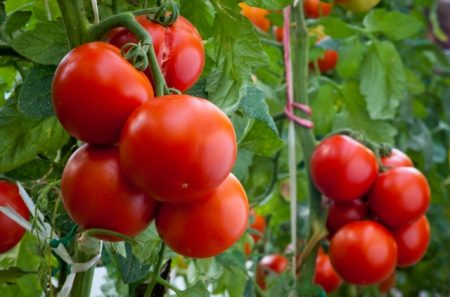
Seeds can be harvested from the fruit after harvest. For this, healthy, strong and large fruits are selected. They are selected from the second or third brush of the plant. Make sure the fruit is not rotten or sour. Then the fruit is cut along the sinuses and the seeds are taken out. They are then put in a warm place and allowed to wander a couple of days. Then they are washed with water and laid out for drying.When the seeds are completely dry, they need to be poured into paper bags and left in a cool and dry place. If you see damaged seeds, remove them immediately.
If you still doubt the quality of the seeds, check them with a solution of usually salt (3-5%). To disinfect them, add a little potassium permanganate to the solution. Such a check will only take 15 minutes. Floating seeds are empty, they need to be removed, and those that have fallen are suitable for further planting.
Why use tomatoes Aphrodite
Due to its properties, Aphrodite tomatoes are recommended to be grown on large farms and in several greenhouses. Good commercial quality and the ability to transport them over long distances allows the use of this variety of tomatoes in almost all areas. The variety is considered truly universal. It looks beautiful in slices, in salads, on sandwiches, keeps its shape and does not spread much. Tomatoes Aphrodite are also processed in various ways: they make pasta, sauces from them, canned whole. They can also be used for pizza, main dishes, pies and soups.
The Impact of Diseases and Pests
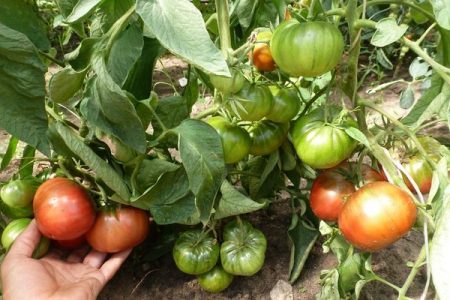
Aphrodite has pretty good immunity, she stands up to many diseases, from which tomatoes usually suffer. Among these diseases:
- VTM;
- late blight;
- Column
- Fusarium wilt.
But they are still sometimes worth spraying with a Bordeaux mixture. And although diseases do not bother the plant, it has another enemy - the Colorado potato beetle. Because of it, you can lose the bush itself and the entire crop. Therefore, they should not be planted next to potatoes, but rather keep them away. It is also worth periodically spraying with drugs against the Colorado potato beetle and checking the leaves so that there are no these pests. From Colorado beetles helps “Prestige”, and from small insects such as aphids and thrips - “Bison”.
How to store
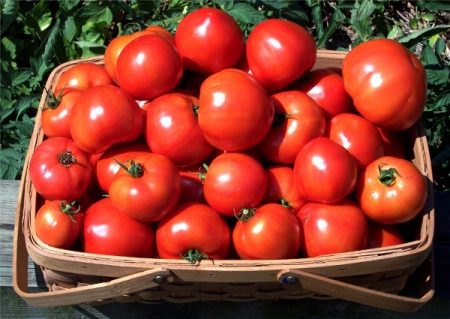
If you decide not to preserve and not to process tomatoes in any way, you can store them in fruits, the main thing is to comply with the conditions. The temperature in the room should be from 10 to 12 degrees, with a humidity of not more than 80-85%. Otherwise, the tomatoes will mold or rot, and at lower humidity they will dry out.
There should not be pests, molds and other harmful organisms in the premises and storage areas. In order not to begin microbiological processes, it is worth considering that tomatoes breathe during storage, and moisture evaporates from them. The room must be aired, the fruits should be reviewed and cleaned. Ripe fruits tend to emit ethylene, so it is undesirable to store them next to the rest.
Storage of tomatoes, subject to all the rules, lasts approximately 2.5-3 months. In order for them to be stored longer, their skin is often coated with petroleum jelly or paraffin. There is also an older storage method: before cold weather, plants with green fruits are dug up and hung upside down in warmth. The fruits ripen and increase, as the nutrients from the plant simply go into the fruit. So they can be stored for quite some time.
How to speak about tomatoes Aphrodite
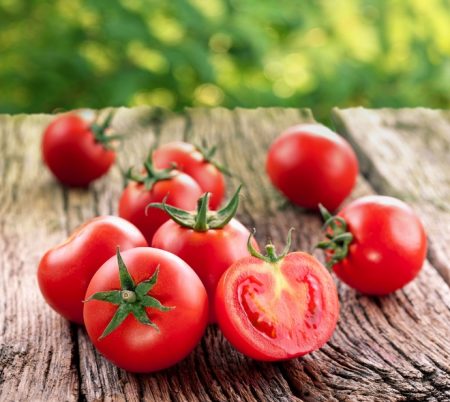
Almost all reviews on forums and other Internet resources are positive. However, it is advised in the summer to either paint over the greenhouse or very well ventilate it. During growth, stakes should be periodically changed if the plant has grown tall. It is better to form bushes in 3 stems, 4 - too much. Aphrodite's crop is usually undulating in 2 harvests. Fruits as a selection, one brush gives almost the same fruits.




 Low-growing tomatoes, without pinching: 5 of the most delicious varieties
Low-growing tomatoes, without pinching: 5 of the most delicious varieties Why tomato seedlings grow poorly
Why tomato seedlings grow poorly We grow a tomato in a shell
We grow a tomato in a shell Growing tomatoes without watering according to the method of Kazarin
Growing tomatoes without watering according to the method of Kazarin